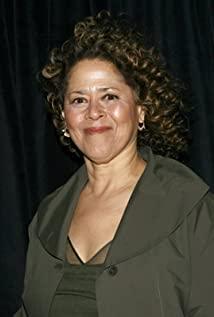" It is against this background that The Stain of Human Nature unfolds.
The narrative structure of the film is very unique, with Coleman's personal recollections added to the linear narrative, but throughout the film is Coleman's writer friend, Nathan. The tragedy started because of a racist word: Spooks. It is precisely because of this that Coleman's life has fallen from heaven to hell. Overnight, he became a loner in the world. When people break away from the previous environment, the so-called stains of human nature will become the talk of others. No matter how big or small these stains are, they are unforgivable sins in the eyes of others.
Two years later, Coleman met the love of his later years, a cleaner named Fonya. That year, Coleman was seventy-one years old. It may be too late to meet love at the age of seventy-one. It is this belated love that dissolves Coleman's hatred of the world. Thomas in Kundera's The Unbearable Lightness of Life spent the most hopeless six years of his life having sex with more than 200 women. The meaning here is the same as that of Coleman, a warm way for those who fail to feel the passions of the world. At the end of the day, the relationship between Coleman and Fonya has gone beyond the passions and irresistible possessions of their youth, but has risen to sensual needs. Spiritual love lasts longer than physical love, especially when death is looming.
Human blemish?
All the blame in the film is directed at Coleman, who seems to have a crime that cannot be forgiven.
Race: Racial discrimination, like adultery, has become a name for public trials and even a pastime of mass entertainment. Ironically, Coleman wasn't Jewish, but a black man. In the film, the director spends a lot of shots to describe Coleman's story when he was young, about his family, about his identity. It is precisely because of Coleman's black identity that he has lost a lot of things. As he grew up, Coleman wanted to get rid of his black identity, so he began to rely on his white appearance to hide his background. After the Spooks incident, Coleman began to reflect on himself, and this confession does seem like a guilt here. If it is said that the trial is carried out in the name of racial discrimination, it would be a bit high-sounding. The real trial of Coleman here is his conscience.
Emotions: Fonya resembles Hester in The Scarlet Letter, except that Fonya is the focus of various social issues. Many problems in American society have all happened to Fangnia. This setting of "collecting thousands of pets in one" makes Fangnia's image more full. It also makes the interdependence between her and Coleman more convincing. It seems that what happened between Fangnia and Coleman in the movie is not just love, but more complex emotions than love. Two people are 7 to each other, like travelers who warm each other on a winter night. At this time, it was the winter of their lives, both for Fannya and for Coleman, and what was cold was the gradually exhausted hearts of the two of them.
Most of the scenes in the movie are indoors. Although there is no grand narrative and intense scenes, the erotic scenes between Coleman and Fonya can still be fascinating. The director did not describe these erotic scenes too much, but tried them out, which not only enriched the film, but also made the connection of the stories more natural. At the end of the film, everyone seems to be forgiven.
Although the director is describing the intolerance of this society from the very beginning, as the story unfolds, those who are intolerant are not bad. This attitude of standing on the moral high ground is innate to human beings, and it is also the era of the times. The "quality" that is given to each person. To Coleman, this is the stain of human nature, and to the bystander, it is precisely the weakness of human nature. The biggest difference between Coleman and the bystander is that he is a client. At the end of the film, both Coleman and Fonya were redeemed. Although the price of this redemption is very high, compared to those who are living in the last breath, this redemption is given by God. The best gift.
View more about The Human Stain reviews











